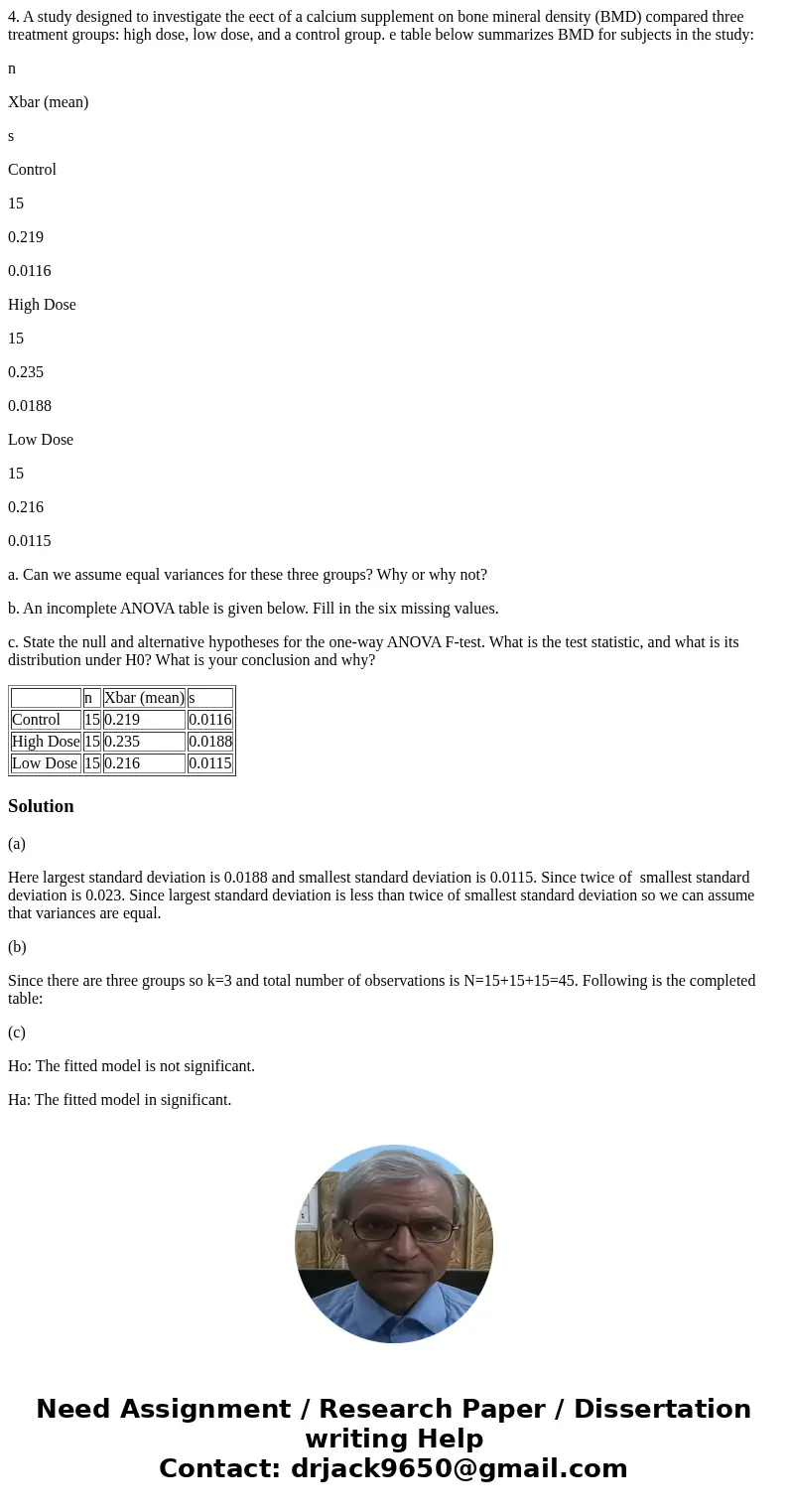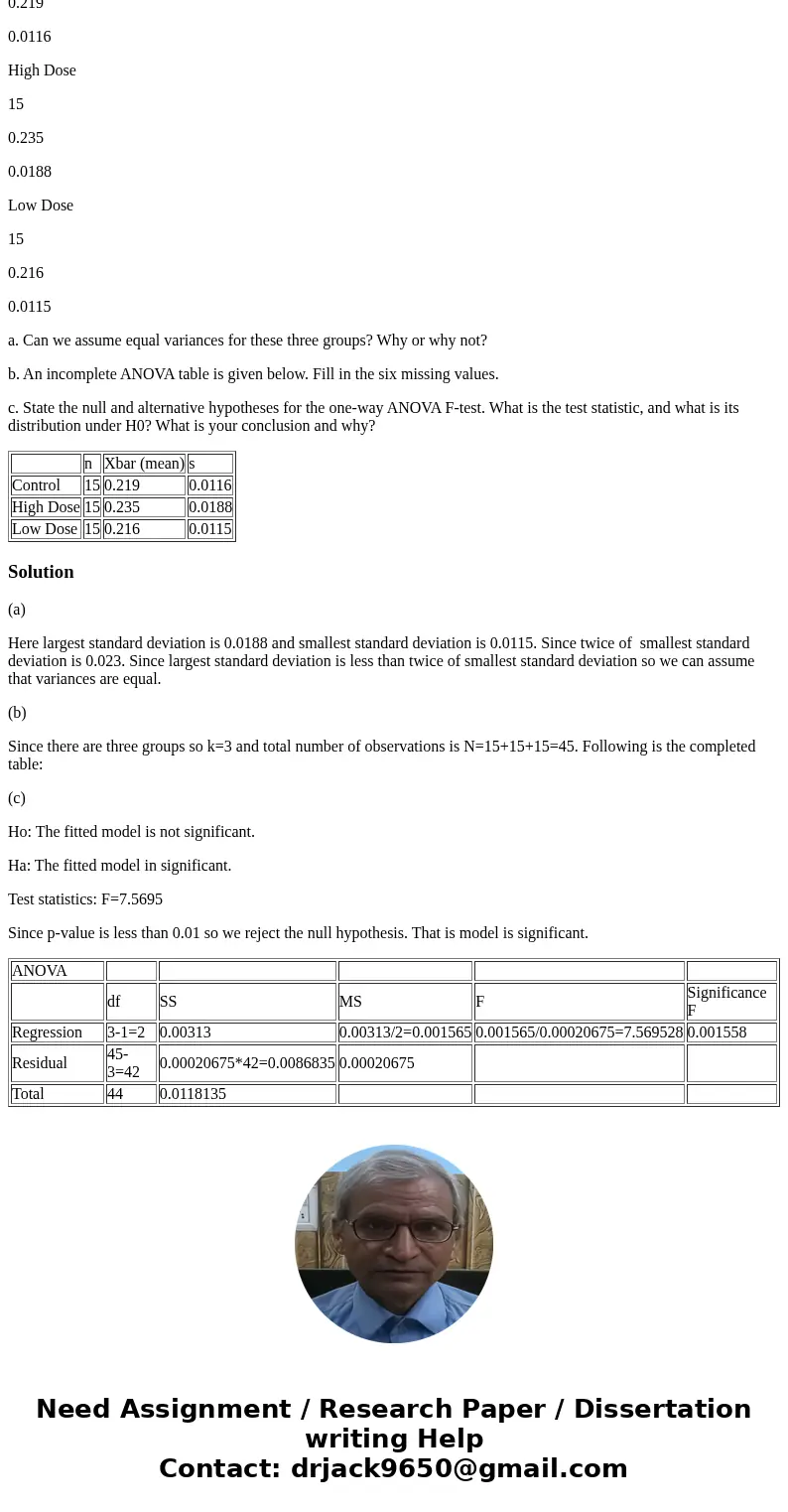4 A study designed to investigate the eect of a calcium supp
4. A study designed to investigate the eect of a calcium supplement on bone mineral density (BMD) compared three treatment groups: high dose, low dose, and a control group. e table below summarizes BMD for subjects in the study:
n
Xbar (mean)
s
Control
15
0.219
0.0116
High Dose
15
0.235
0.0188
Low Dose
15
0.216
0.0115
a. Can we assume equal variances for these three groups? Why or why not?
b. An incomplete ANOVA table is given below. Fill in the six missing values.
c. State the null and alternative hypotheses for the one-way ANOVA F-test. What is the test statistic, and what is its distribution under H0? What is your conclusion and why?
| n | Xbar (mean) | s | |
| Control | 15 | 0.219 | 0.0116 |
| High Dose | 15 | 0.235 | 0.0188 |
| Low Dose | 15 | 0.216 | 0.0115 |
Solution
(a)
Here largest standard deviation is 0.0188 and smallest standard deviation is 0.0115. Since twice of smallest standard deviation is 0.023. Since largest standard deviation is less than twice of smallest standard deviation so we can assume that variances are equal.
(b)
Since there are three groups so k=3 and total number of observations is N=15+15+15=45. Following is the completed table:
(c)
Ho: The fitted model is not significant.
Ha: The fitted model in significant.
Test statistics: F=7.5695
Since p-value is less than 0.01 so we reject the null hypothesis. That is model is significant.
| ANOVA | |||||
| df | SS | MS | F | Significance F | |
| Regression | 3-1=2 | 0.00313 | 0.00313/2=0.001565 | 0.001565/0.00020675=7.569528 | 0.001558 |
| Residual | 45-3=42 | 0.00020675*42=0.0086835 | 0.00020675 | ||
| Total | 44 | 0.0118135 |


 Homework Sourse
Homework Sourse